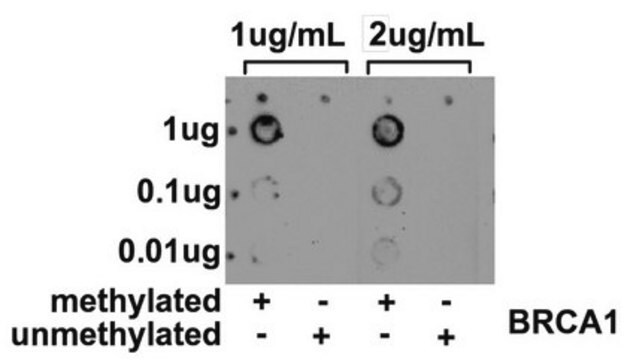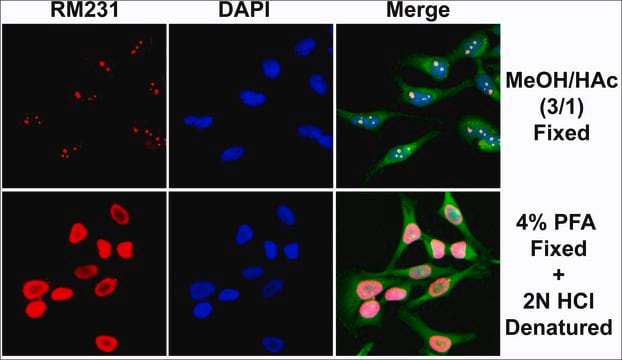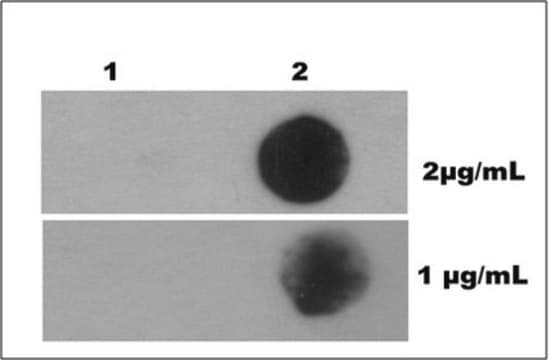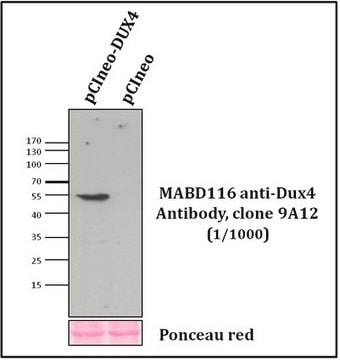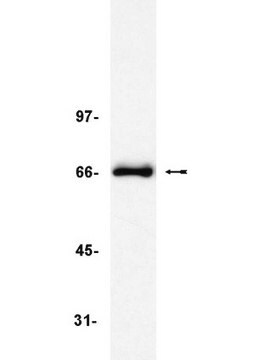MABE1081
Anti-5-Methylcytosine (5mC) Antibody, clone EDL MC-4
clone EDL MC-4, from mouse
Synonim(y):
5mC, 5-methylcytosine
About This Item
Polecane produkty
pochodzenie biologiczne
mouse
Poziom jakości
forma przeciwciała
purified immunoglobulin
rodzaj przeciwciała
primary antibodies
klon
EDL MC-4, monoclonal
reaktywność gatunkowa (przewidywana na podstawie homologii)
all
metody
dot blot: suitable
immunoprecipitation (IP): suitable
izotyp
IgG2aλ
Warunki transportu
ambient
docelowa modyfikacja potranslacyjna
unmodified
Opis ogólny
Specyficzność
Immunogen
Zastosowanie
Immunoprecipitation Analysis: 2.5 µg from a representative lot immunoprecipitated 5 ng of DNA with 5-methylcytosine (5mC) modification, but not DNA with only 5-hydroxymethylcytosine (5hmC) modification or unmodified cytosine (Courtesy of Jeong-Heon Lee, Ph.D.; Chad Clark; Tamas Ordog, M.D.; Zhiguo Zhang, Ph.D. Epigenomics Development Laboratory, Epigenomics Program, Center for Individualized Medicine, Mayo Clinic, Rochester, Minnesota, USA).
Epigenetics & Nuclear Function
Jakość
Dot Blot Analysis: 2 µg/mL of this antibody detected 25-100 ng of DNA with 5-methylcytosine (5mC), exhibiting less than 25% cross-reactivity toward 5-formylcytosine (5fC) and no detectable immunoreactivity toward 5-hydroxymethylcytosine (5hmC), 5-carboxylcytosine (5caC), or unmodified cytosine.
Opis wartości docelowych
Postać fizyczna
Przechowywanie i stabilność
Inne uwagi
Oświadczenie o zrzeczeniu się odpowiedzialności
Not finding the right product?
Try our Narzędzie selektora produktów.
Kod klasy składowania
12 - Non Combustible Liquids
Klasa zagrożenia wodnego (WGK)
WGK 1
Temperatura zapłonu (°F)
Not applicable
Temperatura zapłonu (°C)
Not applicable
Certyfikaty analizy (CoA)
Poszukaj Certyfikaty analizy (CoA), wpisując numer partii/serii produktów. Numery serii i partii można znaleźć na etykiecie produktu po słowach „seria” lub „partia”.
Masz już ten produkt?
Dokumenty związane z niedawno zakupionymi produktami zostały zamieszczone w Bibliotece dokumentów.
Nasz zespół naukowców ma doświadczenie we wszystkich obszarach badań, w tym w naukach przyrodniczych, materiałoznawstwie, syntezie chemicznej, chromatografii, analityce i wielu innych dziedzinach.
Skontaktuj się z zespołem ds. pomocy technicznej
